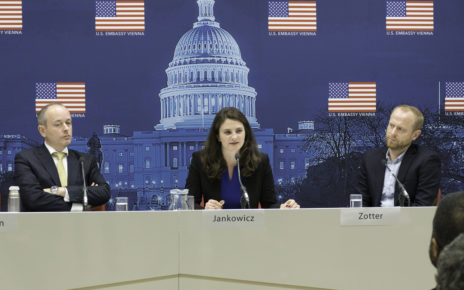All warfare is based on deception – Sun Tzu, The Art of War
Throughout the 20th century, states and non-state actors alike have mounted disinformation campaigns in times of war and peace to gain an edge over their enemies. In the pursuit of political goals, several media have been used to convey (dis)information from the source to targeted audiences, including radio, television, leaflets, even loudspeakers. When discussing disinformation in a 21st century societal context, however, it often goes hand in hand with the mention of social media, especially in the Western world. For instance, a Canadian Security Intelligence Services (CSIS) report (PDF) specifically warns of the threat that disinformation on social media poses. This point of convergence raises the question: why is social media disinformation studied so much? The answer is rather cogent: it is the preferred medium for disinformation aimed at Western audiences since it allows an actor to reach its target freely, rapidly, and cheaply.
Social media’s reliability in reaching Western audiences with content that a state would find objectionable at best and dangerous at worst is a testament to the evolution of communication technologies. During the Cold War, to reach the population behind the Iron Curtain in Soviet-occupied Europe, the CIA funded Radio Free Europe (RFE) from 1949 until 1972 (PDF), as did the U.S. government afterwards. Radio was the preferred medium because radio waves are not restricted by border checkpoints. Although the information disseminated was mostly truthful, for the communist government, it was considered capitalist propaganda and as such, was inherently threatening. Preventing radio waves from reaching radio receivers, however, is very difficult, hence the inability of communist regimes to block them.
The logic of adversarial states’ usage of social media is very similar to that of the U.S. in sponsoring RFE: it is caused by Western states’ eroded sovereignty in cyberspace. The Pravda (one of the main newspapers of Soviet Russia) would never have been permitted to circulate in the West for fear that it would constitute a vehicle for harmful disinformation, but RT and China Central Television (CCTV) are allowed (or perhaps tolerated for the time being) to publish on all main Western social media platforms.
In addition to being a reliable medium to target Western audiences with subversive content, social media has become the most effective means of reaching Western audiences. In fact, a 2019 survey by the Pew Research Centre found that more than 73% and 69% of American adults have had exposure to Facebook and YouTube, respectively. Unsurprisingly, the use of Instagram and Snapchat reaches an even higher proportion with the 18–24 age group. Comparatively, the use of other media has dramatically fallen today, with only one newspaper printed for every 10 Americans, and only 56% reported to watch TV via cable or satellite. Still, it might not be the widespread use of social platforms alone that makes them so attractive for disinformation campaigns per se, but rather their intended role. Although biased narratives can be inserted in even the most innocent content, social media is increasingly a substitute for traditional news. For instance, 86% of Americans declare gathering news on social media and one in five collects most of their political news on social platforms. Rather than simply being a medium for entertainment, it is now used to keep tabs on the news and, for an increasing portion of the American public, to develop political ideas. Thus, foreign adversaries can have a more direct impact on the targeted audience if individuals exposed to their biased material are already open to political ideas and news. Simply put, the choice of medium to convey disinformation has followed the habits of North Americans and of the Western public at large.
Finally, the economic incentive to use social platforms rather than other media simply cannot be ignored both in the case of state media, like RT and CCTV, and of social media accounts engineered to spread a particular narrative. Much was written about the Russian-paid trolls’ attempt to influence the 2016 American presidential elections, especially their use of Facebook targeted advertising. Yet, the amount they spent on publicity is minuscule in the grand scheme of things. All the Facebook ads purchased by the Saint-Petersburg-based Internet Research Agency (IRA), which has been dubbed a “Kremlin-directed ‘troll factory’,” cost around $100,000. Facebook estimated that with this humble investment the IRA was able to reach around 10 million people. This figure, however, excludes the amount of organic traffic the estimated 90 employees working on this influence project were able to generate with the 500 or so accounts they maintained. Social media has become the preferred medium for disinformation for foreign states since it is a (mostly) unregulated, large, and cheap avenue to target Western audiences. Yet, this window might close sooner rather than later as social platforms and governments in many NATO countries are putting in place regulations to address this threat to democracy (PDF).
Featured image: Social Media Icon on a Phone (2013), by Jason Howie via Wikimedia Commons.
Disclaimer: Any views or opinions expressed in articles are solely those of the authors and do not necessarily represent the views of the NATO Association of Canada.




